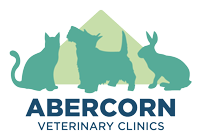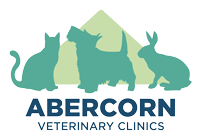Dental care
Why is this so important to my pet?
Dental disease is very common in our pets – dogs, cats, and rabbits in particular.
We examine pets’ mouths as part of every routine examination, and frequently discover dental disease as an incidental finding.
Much of this disease will be associated with significant pain to the individual.
“But my pet doesn’t seem sore?”
Our dogs and cats don’t show pain in the same way that we do.
Dogs and cats in dental pain may be a bit depressed, or irritable, rub or paw at their mouths, cease to groom themselves, avoid chewing hard foods, or selectively eat on one side of their mouths.
Cats are notoriously good at hiding pain. The saying “if it is sore for us then it is sore for them” is possibly never more true than when talking about our pets’ mouths.
How do I find out if my pet has a dental problem?
An integral part of routine vaccination and booster appointments is a full health check which includes examination of your pet’s mouth and teeth.
Of course if you are a member of our Pet Health Club then your pet will have a further six-monthly full clinical examination, allowing the vet to keep an even closer eye on your pet’s oral health.
You can also take advantage of our free nurse clinics. Our qualified nurses are all experienced at assessing pets' mouths for the presence of dental disease. Please feel free to make an appointment.
What sort of problems can my pet get?
Below is a list of some of the common problems we encounter:
-
Plaque and calculus.
-
Gingivitis, or inflammation of the gums.
-
Periodontal disease, caused by infection under the gum line.
-
Abscesses.
-
Chipped, cracked or worn teeth.
-
Feline resorptive lesions in cats.
We have well equipped facilities at the surgery to undertake many dental procedures. Alongside nurse clinics to advise on pet dental care, we offer a variety of dental procedures including:
-
Digital dental xray
-
Prophylactic care
-
Dental extractions
-
Tooth cleaning
-
Removing retained baby teeth
How to clean your pet’s teeth
In between check ups, you can help take care of your pet’s teeth by brushing regularly.
The following is a guide to doing so effectively:
-
Choose a time when your pet is settled.
-
Apply the pet toothpaste to the soft-bristled pet toothbrush and then push it down into the bristles.
-
Sit them down quietly.
-
Without restraint, allow them to lick the toothpaste first.
-
Place one hand across the bridge of the muzzle with a finger or thumb under the chin to keep the mouth closed.
-
Gently lift the top lip and insert the toothbrush inside the cheek.
-
The most important place to brush is at the gum line.
-
Move the brush in gentle circular motions with emphasis of the stroke away from the gum line. Do not scrub the teeth.
-
The goal is to brush the outside surfaces of all the teeth in a systematic way. If, initially, your pet does not cooperate for long enough; start each session by brushing at a different position in his mouth.
-
The back teeth should be cleaned first, especially the upper ones, then the canine teeth and finally, once your pet is happy to accept this, the front teeth.
Brushing the inner surfaces of the teeth can prove to be difficult. If you are unable to do this, don’t despair. Providing the rest of the teeth are reasonably clean, the tongue will do quite a good job of this.
Remember, there is no point wrestling with your pet. Try to make the experience as enjoyable as possible. Reward them with a small treat and lavish praise if they behave well.

